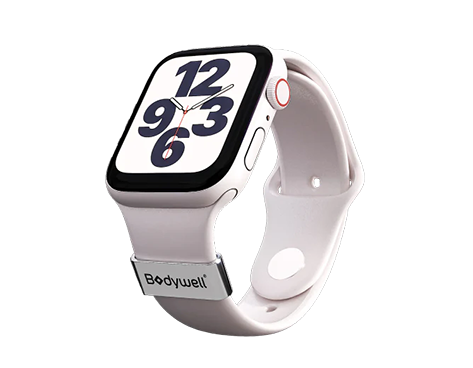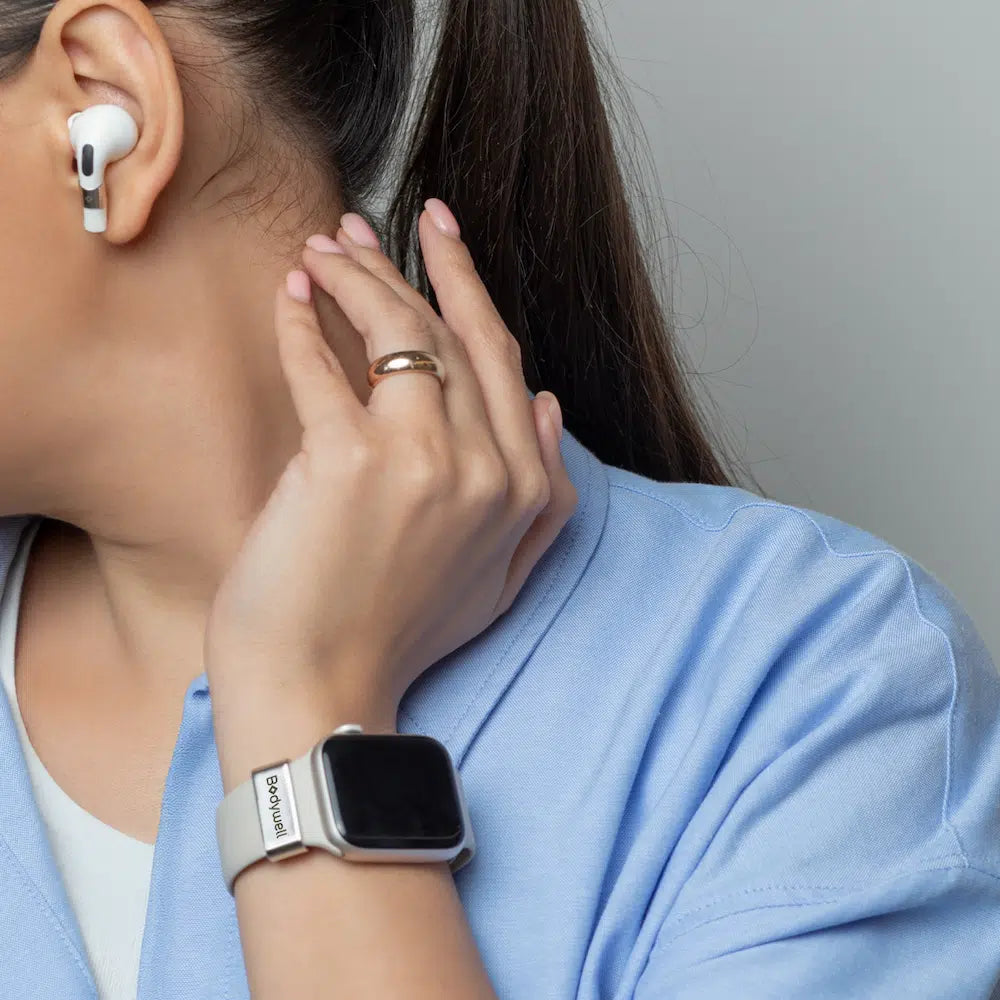Do Apple AirPods emit EMF radiation? The short answer is yes.
In the age of wireless convenience, AirPods have become widespread accessories for many smartphone users. However, concerns about their safety, particularly regarding radiation emissions, have lingered. This article aims to address the common queries surrounding AirPods and their potential impact on health.
Are AirPods Bad For Your Brain?
AirPods use radiation to connect to your gadgets. And given how close they are to our brains, it's understandable to ask what influence they have on our health. So, are AirPods bad for you?
This radiation is classified as a Class 2B carcinogen by the World Health Organization, and governments such as the state of California warn you not to expose your head to it.
Apple AirPods™ emit non-ionizing radiation. While non-ionizing radiation is regarded as "safer" than ionizing radiation, a lesser risk does not imply zero risk.
It has become such a concern that a group of over 250 scientists has written to the World Health Organization, requesting that they reconsider existing guidelines on EMF exposure limits. Why? Because, now, tech businesses are not required to declare EMF concerns unless radiation levels reach a certain threshold.
As Dr. Joel Moskowitz of the University of California explains: "Apple's wireless AirPods communicate with each other using a magnetic induction field, this is a variable magnetic field that is sent through the brain to communicate with the other one...there isn't even any research on what it could be doing to the brain, let alone regulation to limit potential effects."
Can Wireless Headphones Cause Cancer?
As mentioned, to connect and broadcast sound via Bluetooth, Apple AirPods™ must produce radiofrequency radiation. The radiation is typically around 2.4 GHz per pod.
Again, the issue isn't necessarily high levels of EMF waves; it's that you're inserting this powerful equipment into your ear canal. Microwaves also emit radiation, but you are usually at least a few feet away. With Bluetooth earbuds, you are physically introducing radiation into your body.
That is not just very close to your brain, but also to a portion of your head that does not have a skull, providing even the most minimal amount of EMF protection. The radiation travels directly to your brain. Even with emission levels lower than those of a cell phone, there is the aspect of increased absorption.
However, “lower risk does not mean zero risk,” mentioned Meedan’s researchers, who also noted that non-ionizing radiation sources were generally considered to be safer than ionizing radiation sources.
The fear of wireless headphones causing cancer has fueled numerous debates and studies. Although scientific consensus remains elusive, some studies suggest a possible link between electromagnetic field (EMF) radiation exposure from wireless devices and certain health issues.
The International Agency for Research on Cancer, a branch of the World Health Organization, has identified electromagnetic radiation from cellphones and Bluetooth devices as potentially cancer-causing.
What Scientists and Experts Are Saying
The scientific community has expressed significant concerns about the proliferation of wireless devices like AirPods:
-
Over 250 scientists have signed a petition to the United Nations and World Health Organization calling for stronger regulations on EMF-emitting devices.
-
More than 3,500 medical doctors signed a 2020 consensus statement confirming that wireless radiation has been proven to damage biological systems at intensities below current government limits.
-
The International Agency for Research on Cancer, a branch of the World Health Organization, has classified radiofrequency electromagnetic fields as "possibly carcinogenic to humans" (Class 2B carcinogen).
- A July 2021 European Parliament research report titled "Health Impact of 5G" concluded that commonly used RF frequencies are probably carcinogenic for humans and affect male fertility.
Jerry Phillips, a professor of biochemistry at the University of Colorado, states: "My concern for AirPods is that their placement in the ear canal exposes tissues in the head to relatively high levels of radio-frequency radiation."
Why AirPods Raise Special Concerns
-
Direct Brain Access: They sit in the ear canal, providing a direct pathway to the brain with minimal tissue barriers.
-
Cross-Brain Communication: As Dr. Moskowitz explained, AirPods create a magnetic induction field that passes through your brain as the earbuds communicate with each other.
-
Long Duration Exposure: Many users wear them for 4+ hours daily, creating a persistent radiation exposure pattern.
-
Multiple Radiation Types: AirPods emit both Bluetooth radiation (to connect to your phone) and magnetic field radiation (to communicate between earbuds).
While manufacturers emphasize that radiation levels are within safety guidelines, these guidelines:
- Were established primarily for short-term exposure
- Don't account for the unique positioning of in-ear devices
- Don't consider the combined effects of different radiation types
- Haven't been substantially updated despite rapid technological changes
The Ultimate Solutions
For those concerned about the potential health risks associated with AirPods and other wireless earphones, exploring solutions like EMF radiation protection for earbuds can offer peace of mind. Products like Bodywell®’s EMF Protection for AirPods provide an additional layer of defense against harmful radiation emissions.
Our 3-rd party tests indicate that our solutions can significantly minimize the quantity of radiation your body will absorb.
Key benefits of using Bodywell include:
- Thermal Reduction: Bodywell products can reduce thermal absorption by up to 20%, helping to minimize heat-related effects from EMF exposure.
- Reduction in SAR: Bodywell products have demonstrated an 80% reduction in SAR, significantly lowering the amount of radiation absorbed by the body.
- PH Recovery: Prolonged EMF exposure can disrupt the body's pH balance. Bodywell products help recover pH levels by 100%, maintaining the body's natural equilibrium.
The other alternative is to utilize a wired headset, such as the one that probably came with your phone. In reality, this is what the US Centers for Disease Control and Prevention suggests.
Takeaway
While the debate over the safety of AirPods and similar wireless devices continues, taking proactive steps to minimize exposure to Bluetooth radiation is prudent. Whether through limiting usage or investing in EMF protection products, prioritizing personal well-being remains paramount in an increasingly connected world.
In conclusion, while AirPods offer unparalleled convenience, concerns about their safety persist. By staying informed about potential risks and adopting preventive measures, users can enjoy the benefits of wireless technology without compromising their health.





















Leave a comment
This site is protected by hCaptcha and the hCaptcha Privacy Policy and Terms of Service apply.